Ditapis dengan
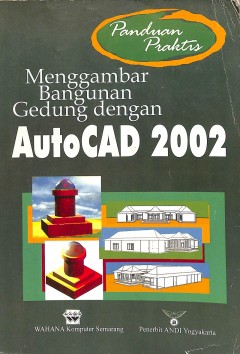
Menggambar bangunan gedung dengan auto cad 2002
- Edisi
- 2002
- ISBN/ISSN
- -
- Deskripsi Fisik
- 307 p.
- Judul Seri
- -
- No. Panggil
- TXT GEN AND m C.1
- Edisi
- 2002
- ISBN/ISSN
- -
- Deskripsi Fisik
- 307 p.
- Judul Seri
- -
- No. Panggil
- TXT GEN AND m C.1

The wisdom and teachings of stephent R. covey
- Edisi
- 2012
- ISBN/ISSN
- -
- Deskripsi Fisik
- 160 p.
- Judul Seri
- -
- No. Panggil
- TXT LE STE t C.1
- Edisi
- 2012
- ISBN/ISSN
- -
- Deskripsi Fisik
- 160 p.
- Judul Seri
- -
- No. Panggil
- TXT LE STE t C.1
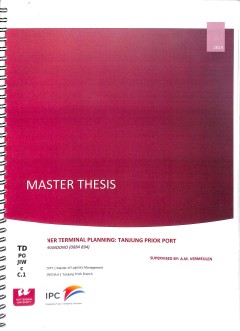
Container terminal planning : tanjung priok port
Container handling activities in Tanjung Priok Port, the biggest port in Indonesia, received a lot of critics from customers. The port is perceived to be slow in executing its operation, which create unnecessary extra cost for customers. The port it self suffer from lack of backup area needed to expand its handling capacity. Expansion is necessary to anticipate the fast growing cargo traffic in…
- Edisi
- -
- ISBN/ISSN
- -
- Deskripsi Fisik
- 77 p., ; 29 cm
- Judul Seri
- Master Thesis
- No. Panggil
- TD PO JIW c

A six sigma framework for marine container terminals", International Journal…
- Edisi
- Vol. 2 Iss 3 pp. 241 - 253
- ISBN/ISSN
- -
- Deskripsi Fisik
- 15 p.
- Judul Seri
- -
- No. Panggil
- ATC LO NOO s
- Edisi
- Vol. 2 Iss 3 pp. 241 - 253
- ISBN/ISSN
- -
- Deskripsi Fisik
- 15 p.
- Judul Seri
- -
- No. Panggil
- ATC LO NOO s
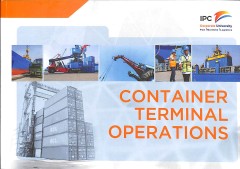
Container Terminal Operations
This book describe the activities, facilities and operation of the container terminal. Beside Explain the role of the container terminal in cargo handling and Discuss organizational structure, management, supervision and control of the container terminal.
- Edisi
- -
- ISBN/ISSN
- -
- Deskripsi Fisik
- 114 p., : illus : 15 cm
- Judul Seri
- -
- No. Panggil
- IPC GUI IND c
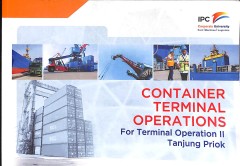
Container Terminal Operations : For Terminal Operation II Tanjung Priok
This book describe the activities, facilities and operation of the container terminal. Besides discuss organizational structure, management, supervision and control of container terminal Explain the role of the container terminal in cargo handling and safety working environment.
- Edisi
- -
- ISBN/ISSN
- -
- Deskripsi Fisik
- 114 p., : illus : 15 cm
- Judul Seri
- -
- No. Panggil
- IPC GUI IND c
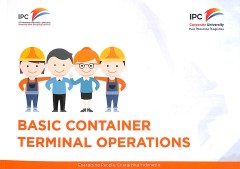
Basic Container Terminal Operations
[15:55, 1/15/2018] Mas Ridwan: Indonesia merupakan Negara berkembang yang sedang mengalami pertumbuhan hal ini menyebabkan peningkatan GDP yang signifikan. Target produktivitas Indonesia harus mencapai 60% untuk dapat mempertahankan nilai barang dan jasa sebesar 6% – 7%. Ketidakmerataan pertumbuhan GDP di Indonesia khususnya terjadi pada kawasan di luar pulau Jawa dikarenakan akses yang sulit…
- Edisi
- -
- ISBN/ISSN
- -
- Deskripsi Fisik
- 219 p., 15 cm.
- Judul Seri
- -
- No. Panggil
- IPC GUI BAS
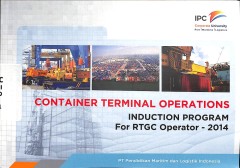
Container Terminal Operations Induction Program For RTGC Operator 2014
Buku ini membahas mengenai container terminal operation. Didalamnya anda akan di kenalkan dengan program pengembangan yang tidak saja menyiapakan anda untuk menjadi tenaga operasional handal yang menguasai kopetensi tekniks, tetapi juga diharapkan memiliki kopetensi tinggi sebagai seorang operator.
Didalamnya membahas pelatiha…
- Edisi
- -
- ISBN/ISSN
- -
- Deskripsi Fisik
- 127 p.,; illus : 15 cm
- Judul Seri
- -
- No. Panggil
- GUI IND c
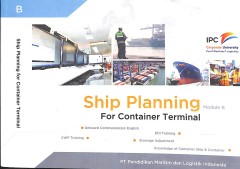
Ship planning for container terminal modul B
Buku ini merupakan buku modul ship plainning for container terminal. Yang mana buku ini membahas mengenai "container". Buku ini memuat pula EDI Training for TO II Ship training
- Edisi
- -
- ISBN/ISSN
- -
- Deskripsi Fisik
- 117 p.,; illus : 15 cm
- Judul Seri
- -
- No. Panggil
- IPC GUI IND s

Hybrid approach for container terminals performances evaluation and analysis
Turnaround time, defined as the total time spent by a vessel within the port area, is one of the most important key performance measures for a container terminal. In this paper, the authors propose a hybrid approach based on simulation and genetic algorithms to investigate vessels’ turnaround time in a real container terminal under different scenarios characterised by increases in containers …
- Edisi
- Vol. 9, Nos. 1/2, 2014
- ISBN/ISSN
- -
- Deskripsi Fisik
- 9 p.
- Judul Seri
- Int. J. Simulation and Process Modelling
- No. Panggil
- ACT MG NIC h C.1

Port operations and container terminal management with applications
This book explains the port operations and proposes approaches that aim to improve the most important successive steps in container terminal management activities. A multi-period assignment problem that seeks to allocate vessels to berthing spaces and quay cranes is proposed to handle the quayside operations. Subsequently, on the yard side, a discrete-event simulation model for the real life de…
- Edisi
- -
- ISBN/ISSN
- 978-3-639-36568-9
- Deskripsi Fisik
- vi, 93p. ; 23cm.
- Judul Seri
- -
- No. Panggil
- TXT PO GUL p

A follow-up survey of berth allocation and quay crane scheduling problems in …
- Edisi
- -
- ISBN/ISSN
- -
- Deskripsi Fisik
- 15 p.
- Judul Seri
- -
- No. Panggil
- ATC PO BIE a
- Edisi
- -
- ISBN/ISSN
- -
- Deskripsi Fisik
- 15 p.
- Judul Seri
- -
- No. Panggil
- ATC PO BIE a

A model for performance evaluation and sensitivity analysis of seaport contai…
In the last decades, the growth of the containerised freight demand has led to a fast development of seaport container terminals. As an evidence of the relevance and of the interest that such intermodal terminals have reached, consider the significant amount of existing scientific works facing the problem of optimising their performances at operative, tactic, and strategic levels. In this fra…
- Edisi
- -
- ISBN/ISSN
- -
- Deskripsi Fisik
- 6 p.
- Judul Seri
- -
- No. Panggil
- ACT PO CON a
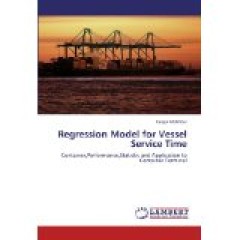
Regression Model for Vessel Service Time: Container,Performance,Statistic and…
The rapid development in container terminal ports in providing efficient and effective services and high port productivity are necessary nowadays. It is happen as current demands from new generation of container vessels are an indicator to the container terminal operators how serious international trade via sea. This work shares scenario of service time at container terminal as a sign of its pe…
- Edisi
- -
- ISBN/ISSN
- 9778-3-8473-4789-7
- Deskripsi Fisik
- 136p. ; 23cm.
- Judul Seri
- -
- No. Panggil
- TXT PO MOK r C.1
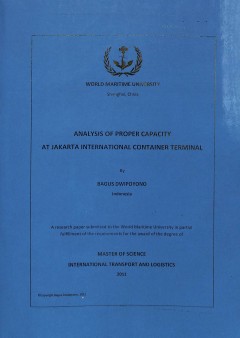
Analysis of proper capacity at Jakarta International Container Terminal
As a facility with high capital investment, container terminal tends to be operated with maximum capacity by using high utilization of facilities and equipment rather than a proper throughput. However, a high utilization is leading to the ships waiting time and as consequence lowering the service level. Therefore a study is needed to determine the proper capacity by considering the interest of …
- Edisi
- -
- ISBN/ISSN
- -
- Deskripsi Fisik
- xiii, 100 p., ; illus : 30 cm ; bibliography
- Judul Seri
- -
- No. Panggil
- TD PO DWI a C.1
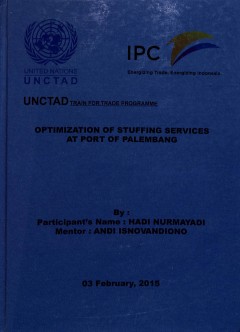
Optimization of stuffing services at port of Palembang
- Edisi
- -
- ISBN/ISSN
- -
- Deskripsi Fisik
- 30 p., ; 33 cm
- Judul Seri
- -
- No. Panggil
- TD PO NUR o
- Edisi
- -
- ISBN/ISSN
- -
- Deskripsi Fisik
- 30 p., ; 33 cm
- Judul Seri
- -
- No. Panggil
- TD PO NUR o
Container terminals and cargo systems : design, operations management, and lo…
This book presents new insights and successful solutions to the operational problems of automated container terminals and cargo systems. It comprises reports on the state of the art, applications of quantitative methods, as well as case studies and simulation results. Its contributions are written by leading experts from academia and business and address practitioners and researchers in logisti…
- Edisi
- -
- ISBN/ISSN
- 978-3-642-08049-4
- Deskripsi Fisik
- vi, 381 p., 21 cm
- Judul Seri
- -
- No. Panggil
- TXT PO KIM c
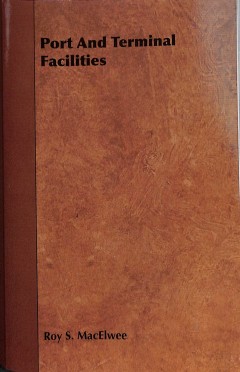
Port and terminal facilities
Many of the earliest books, particularly those dating back to the 1900s and before, are now extremely scarce and increasingly expensive. We are republishing these classic works in affordable, high quality, modern editions, using the original text and artwork.
- Edisi
- 2nd Ed.
- ISBN/ISSN
- 978-1-44461-998-0
- Deskripsi Fisik
- ix, 315 p., ; illus : 21 cm ; bibliography; index;
- Judul Seri
- -
- No. Panggil
- TXT PO MAC p
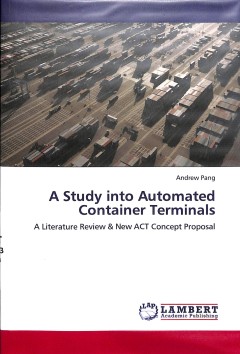
A Study into Automated Container Terminals: A Literature Review & New ACT Con…
Globalization has drastically increased the amount of trade between different nations and this has lead to an exponential growth in shipping activities around the world. As a result, many container terminals are struggling to cope with this new surge of containers moving through their yards. Numerous container terminals are looking at the possibility of automating their container terminal so as…
- Edisi
- -
- ISBN/ISSN
- 978-3-8443-8373-7
- Deskripsi Fisik
- 81p. ; 23cm.
- Judul Seri
- -
- No. Panggil
- TXT PO PAN a

Storage space allocation in container terminals
Container terminals are essential intermodal interfaces in the global transportation network. Efficient container handling at terminals is important in reducing transportation costs and keeping shipping schedules. In this paper, we study the storage space allocation problem in the storage yards of terminals. This problem is related to all the resources in terminal operations, including quay …
- Edisi
- 37 (2003) 883–903
- ISBN/ISSN
- -
- Deskripsi Fisik
- 21 p.
- Judul Seri
- Transportation Research
- No. Panggil
- ATC LO ZHA s

Technical Efficiency Analysis of Container Terminals in the Middle Eastern Re…
Despite an increasing number of studies on the efficiency of container terminals, their focus has mostly been on advanced and emerging markets. There are limited studies on container terminals in developing countries such as those of the Middle Eastern region, which are located in a critical geographic position in the international maritime route between the East and the West. Information on th…
- Edisi
- 31(4) (2015) 477-486
- ISBN/ISSN
- 2092-5212
- Deskripsi Fisik
- 10 p.
- Judul Seri
- The Asian Journal of Shipping and Logistics
- No. Panggil
- ATC LO ALM t

US container terminal leasing and pricing
Income from leasing container terminals and terminal facilities over the last 15 years has risen from miniscule levels to a point where it now represents a majority of the total income at some us ports [l]. This paper reviews the methods used to lease container terminals and terminal facilities, examines the leasing methodologies and pricing approaches used by us public port authorities, and di…
- Edisi
- VOL. 11, NO. 4, 277-288
- ISBN/ISSN
- -
- Deskripsi Fisik
- 13 p.
- Judul Seri
- Maritime Policy & Management: The flagship journal of international shipping and port research
- No. Panggil
- ATC LO DOW u

The ownership and management structure of container terminal concessions
It is now over 25 years since the widespread concessioning of container terminals began. This article examines the impact of concessioning on the balance between public and private sector control, the use of competitive tendering to assign concessions, the structure of the Special Purpose Vehicles (SPVs) to which concessions were originally awarded, and the way in which the ownership of these S…
- Edisi
- VOL. 39, NO. 1, 7–26
- ISBN/ISSN
- 1464–5254
- Deskripsi Fisik
- 22 p.
- Judul Seri
- Maritime Policy & Management: The flagship journal of international shipping and port research
- No. Panggil
- ATC LO FAR t

The corporate geography of global container terminal operators
The terminal and stevedoring industry has expanded substantially in recent years with the emergence of global container terminal operators controlling large multinational portfolios of terminal assets. This paper deals with the emerging corporate geography in the container terminal industry with issues related to the similarities or differences among terminal locations, the processes leading to…
- Edisi
- VOL. 39, NO. 3, 249–279
- ISBN/ISSN
- 1464–5254
- Deskripsi Fisik
- 33 p.
- Judul Seri
- Maritime Policy & Management: The flagship journal of international shipping and port research
- No. Panggil
- ATC LO NOT t

The container terminal community
Over the past 30 years, technological developments have not only aOEected the design and operation of the port function, but also the organizational and institutional relationships within the port community. Two inter-organizational interaction models are presented, drawing on the ® ndings of over 200 in-depth interviews with senior managers representing terminal operators, shipping lines, fee…
- Edisi
- 2001, VOL. 28, NO. 3, 279± 292
- ISBN/ISSN
- 1464± 5254
- Deskripsi Fisik
- 16 p.
- Judul Seri
- Maritime Policy & Management: The flagship journal of international shipping and port research
- No. Panggil
- ATC LO MAR t

Scheduling trucks in container terminals using a genetic algorithm
Trucks are the most popular transport equipment in most mega-terminals, and scheduling them to minimize makespan is a challenge that this article addresses and attempts to resolve. Specifically, the problem of scheduling a fleet of trucks to perform a set of transportation jobs with sequence dependent processing times and different ready times is investigated, and the use of a genetic algorithm…
- Edisi
- Vol. 39, No. 1, January 2007, 33–47
- ISBN/ISSN
- 1029-0273
- Deskripsi Fisik
- 16 p.
- Judul Seri
- Engineering Optimization
- No. Panggil
- ATC LO CNG s

Scheduling material handling vehicles in a container terminal
Increasing global trade has created the need for efficient container ports. The goal of the port is to move containers as quickly as possible and at the least possible cost. Goods that are delayed at the port are inevitably tardy when delivered to the customer, and thus sanctioned by late charges. Two key activities in the port are (i) unloading of containers from truck and then storage in the …
- Edisi
- Vol. 14, No. 7, October–November 2003, 623–633
- ISBN/ISSN
- 1366–5871
- Deskripsi Fisik
- 12 p.
- Judul Seri
- Production Planning & Control: The Management of Operations
- No. Panggil
- ATC LO DAS s

Quay crane scheduling in container terminals
The problem of scheduling identical quay cranes moving along a common linear rail to handle containers for a ship is studied. The ship has a number of container-stacking compartments called bays, and only one quay crane can work on a bay at the same time. The objective of the scheduling problem is to find the work schedule for each quay crane which minimizes the ship’s stay time in port. Find…
- Edisi
- Vol. 38, No. 6, September 2006, 723–737
- ISBN/ISSN
- 1029-0273
- Deskripsi Fisik
- 16 p.
- Judul Seri
- Engineering Optimization
- No. Panggil
- ATC LO CNG q

Productivity of first-generation container terminals: Sydney, Australia
In 1969 the first of Sydney's purpose-built container facilities in Port Jackson, the Seatainer terminal, became operational. Later, in 1973, the second terminal at Glebe Island, a common-user facility, shared the task of handling the container traffic for much of eastern Australia until the development of the new facilities in Botany Bay. The two terminals differed in almost every respect exce…
- Edisi
- VOL. 12, NO. 4, 279-292
- ISBN/ISSN
- -
- Deskripsi Fisik
- 15 p.
- Judul Seri
- Maritime Policy & Management: The flagship journal of international shipping and port research
- No. Panggil
- ATC LO ROB p

Optimal stack layout in a sea container terminal with automated lifting vehicles
Container terminal performance is largely determined by its design decisions, which include the number and type of quay cranes, stack cranes, transport vehicles, vehicle travel path and stack layout.We investigate the orientation of the stack layout (parallel or perpendicular to the quayside) on the throughput time performance of the terminals. Previous studies in this area typically use deter…
- Edisi
- 2017
- ISBN/ISSN
- 1366-588X
- Deskripsi Fisik
- 20P
- Judul Seri
- International Journal of Production Research
- No. Panggil
- ATC LO GUP o

Joint planning for yard storage space and home berths in container terminals
Yard planning is essential for efficient operations in container terminals, especially for ports with limited storage space. To improve the utilisation of space and the efficiency of container handling in a terminal, operators require flexible yard space planning strategies to manage job workloads and yard-to-berth transportation costs. In previous studies, the inter-related decision making pro…
- Edisi
- Vol. 51, No. 10, 3143–3155
- ISBN/ISSN
- -
- Deskripsi Fisik
- 14 p.
- Judul Seri
- International Journal of Production Research
- No. Panggil
- ATC LO KUN j

Inland container terminal—function and rationale
Increasing commercial and recreational pressures on urban waterfront lands, growing demand by seaports for back-up areas and changes in cargo-distribution concepts have caused the relocation of several port functions and the establishment of inland container terminals.
- Edisi
- VOL. 7, NO. 4, 283-289
- ISBN/ISSN
- -
- Deskripsi Fisik
- 9 p.
- Judul Seri
- Maritime Policy & Management: The flagship journal of international shipping and port research
- No. Panggil
- ATC LO HAY i

Hybrid Estimation of Distribution Algorithm for the Quay Crane Scheduling Pro…
The competitiveness of a container terminal is highly conditioned by the time that container vessels spend on it. The proper scheduling of the quay cranes can reduce this time and allows a container terminal to be more attractive to shipping companies. The goal of the Quay Crane Scheduling Problem (QCSP) is to minimize the handling time of the available quay cranes when performing the tasks of …
- Edisi
- 2013
- ISBN/ISSN
- 4063–4076
- Deskripsi Fisik
- 14 p.
- Judul Seri
- Applied Soft Computing
- No. Panggil
- ATC LO IZQ h

Heuristic estimation of container stacking and reshuffling operations under t…
This paper addresses a highly researched area, the reshuffling problem in ports, using a newparadigm-modified containership service order in light of credit risk assessment. Container stacking and reshuffling operations can cause ship delays and additional risk. In deep-sea terminals, outbound containers are tightly stacked according to the retrieval sequence. Due to lack of space, terminals st…
- Edisi
- VOL. 44, NO. 3, 373–391
- ISBN/ISSN
- 1464-5254
- Deskripsi Fisik
- 20 p.
- Judul Seri
- Maritime Policy & Management The flagship journal of international shipping and port research
- No. Panggil
- ATC LO GHA g

Gantry Crane Scheduling with Interference Constraints in Railway Container Te…
Railway container terminals, where gantry cranes are responsible for loading and unloading containers between freight trains and yards, are important hubs of hinterland logistics transportation. Terminal managers confront the challenge in improving the efficiency of their service. As the most expensive equipment in a terminal, the operational performance of gantry cranes is a crucial factor. In…
- Edisi
- Vol. 6, No. 2 (March, 2013), 244-260
- ISBN/ISSN
- -
- Deskripsi Fisik
- 18 p.
- Judul Seri
- International Journal of Computational Intelligence Systems
- No. Panggil
- ATC LO GUO g

Evaluating the service requirements of dedicated container terminals: a revis…
The purpose of this article is to evaluate the service requirements of dedicated container terminals (DCTs). In this article, the service attributes (SAs) of DCTs were first discussed. A fuzzy analytic hierarchy process model was then constructed to measure the users’ perceived importance and dissatisfaction for each of the SAs. Based on these two measurements, a revised importance-performanc…
- Edisi
- Vol. 42, No. 8, 789–805
- ISBN/ISSN
- 1464-5254
- Deskripsi Fisik
- 18 p.
- Judul Seri
- Maritime Policy & Management The flagship journal of international shipping and port research
- No. Panggil
- ATC LO HSU e

Evaluating straddle carrier deployment policies: a simulation study for the P…
Most container terminals in the world today are operating up to their capacities. In this paper, we have developed a decision support system to optimise yard operations by considering all container flows (import, export and transshipment) through the yard with the view to improving terminal performance and efficiency. In another paper, we proposed an optimization model that determines optimal c…
- Edisi
- VOL. 36, NO. 4, 353–366
- ISBN/ISSN
- 1464–5254
- Deskripsi Fisik
- 14 p.
- Judul Seri
- Evaluating straddle carrier deployment policies
- No. Panggil
- ATC LO HAD e

Does trigger point mechanism create monopoly power for Hong Kong container te…
In recent years, the Hong Kong port has been challenged by the emergence of the Shenzhen port. This gives rise to a concern that the high terminal handling charges (THC) levied by the Hong Kong terminal operators are undermining the competitiveness of the Hong Kong port. As the major container terminals in both Hong Kong and Shenzhen are operated by the Hong Kong terminal operators, the monopol…
- Edisi
- VOL. 36, NO. 4, 325–336
- ISBN/ISSN
- 1464–5254
- Deskripsi Fisik
- 14 p.
- Judul Seri
- Maritime Policy & Management: The flagship journal of international shipping and port research
- No. Panggil
- ATC LO FUN d

Deriving decision rules to locate export containers in container yards
A methodology is proposed to determine the storage location of an arriving export container considering its weight. We consider the con®guration of the container stack and the weight distribution of containers in the yard-bay. A dynamic programming model is formulated to determine the storage location to minimize the number of relocation movements expected for the loading operation. We also de…
- Edisi
- 2000
- ISBN/ISSN
- -
- Deskripsi Fisik
- 13 p.
- Judul Seri
- EUROPEAN JOURNAL OF OPERATIONAL RESEARCH
- No. Panggil
- ATC LO KIM d

Determinants and strategies for the development of container terminals
The paper examines an important player in the container industry: the container terminal. We evaluate how terminal efficiency operation is affected by the following factors: terminal type, operation type, scale efficiency and returns to scale. In so doing, we test how the typology and operation of terminals and the level of scale efficiency that a terminal can achieve, represent significant fac…
- Edisi
- 2012
- ISBN/ISSN
- -
- Deskripsi Fisik
- 16 p.
- Judul Seri
- Determinants and strategies for the development of container terminals
- No. Panggil
- ATC LO MED d

Design and development of an intelligent context-aware decision support syste…
This paper describes a case study of the research and development of an intelligent context-aware decision support system (ICADSS) prototype for real-time monitoring of container terminal operations in Hong Kong. We present the system design and development of the prototype system, and discuss the experiences and lessons learned. To the best of our knowledge, this study is the first identifiab…
- Edisi
- Vol. 49, No. 12, 15 June 2011, 3501–3526
- ISBN/ISSN
- 1366–588X
- Deskripsi Fisik
- 28 p.
- Judul Seri
- International Journal of Production Research
- No. Panggil
- ATC LO NGA d

CONTAINER TERMINALS AND UTILISATION OF FACILITIES
The central subject of this paper is the efficiency of container terminals. Based on a database of European maritime, rail, and barge container terminals a technical efficien- cy analysis has been made. The analysis in this paper demonstrates that large differences in terminal efficiency can be found in Europe among maritime container terminals. Terminals that specialise in containers only perf…
- Edisi
- Vol. XXXI • No 3 • October 2004, pp. 313-339
- ISBN/ISSN
- -
- Deskripsi Fisik
- 28 p.
- Judul Seri
- INTERNATIONAL JOURNAL OF TRANSPORT ECONOMICS
- No. Panggil
- ATC LO WIE c

Yard operations in the container terminal-a study in the ‘unproductive move…
Research that examined the land utilization of the container terminals in a global perspective[1] revealed that the land utilization planned and achieved by Asian container terminals are much higher than the terminals in western Europe and North America. From the operational point of view, this has led to the question: `what are the impacts of these strategies in land utilization on the yard op…
- Edisi
- VOL. 26, NO. 1, 27± 38
- ISBN/ISSN
- -
- Deskripsi Fisik
- 14 p.
- Judul Seri
- Maritime Policy & Management: The flagship journal of international shipping and port research
- No. Panggil
- ATC LO CHE y

Concession of the Piraeus container terminal: turbulent times and the quest f…
This paper examines the recent concession of the Port of Piraeus (OLP) container terminal to Cosco Pacific. Serious discussions on how to transform the terminal to landlord status started in 2004 and, after an aborted tender, a concession award was approved by the Greek parliament in 2009. The contract is now operational after strong opposition by the port unions and a renegotiation phase in 20…
- Edisi
- VOL. 39, NO. 1, 27–43
- ISBN/ISSN
- 1464–5254
- Deskripsi Fisik
- 19 p.
- Judul Seri
- Maritime Policy & Management: The flagship journal of international shipping and port research
- No. Panggil
- ATC LO PSA c

Competitiveness of container terminal operating companies in South Korea and …
Burgeoning container port facilities have fostered intensified competition among container terminal operating companies (CTOCs). However, despite research into their survival strategies which identified antecedents of competitiveness including hard factors such as facilities, available cargo and cargo processing ability, softer factors spanning human resource management, networks and strategic …
- Edisi
- -
- ISBN/ISSN
- -
- Deskripsi Fisik
- 15 p.
- Judul Seri
- Transportation Research Part A
- No. Panggil
- ATC LO YOO c

Competitiveness of Asian Container Terminals
The paper analyzes factors affecting the competitiveness of Asian container terminals by including quantitative as well as qualitative factors such as operating capacity, convenient facilities, electronic documents handling capacity and connectivity to hinterland. I provide evidence that those factors have a nonnegligible role as to competitiveness of container terminals. The paper applies a pa…
- Edisi
- Volume 26 Number 2 December 2010 pp. 225-246
- ISBN/ISSN
- -
- Deskripsi Fisik
- 22 p.
- Judul Seri
- The Asian Journal of Shipping and Logistics
- No. Panggil
- ATC LO YEO c

Comparison of the operating performance of automated and traditional containe…
This paper explores key factors affecting the operating performance of container terminals, and compares the performance of various container yard (CY) facilities at the port of Kaohsiung using grey relational analysis (GRA) and the concept of entropy. The paper’s findings can be summarised as follows: (1) The most important attributes affecting the operating performance of CY equipment inclu…
- Edisi
- Vol. 16, No. 2, 158–173
- ISBN/ISSN
- -
- Deskripsi Fisik
- 18 p.
- Judul Seri
- International Journal of Logistics Research and Applications
- No. Panggil
- ATC LO YAN c

Comparative evaluation of resource cycle strategies on operating and environm…
This paper examines the use of single and dual cycle operations for three types of resources, namely, quay cranes, vehicles, and yard cranes to improve the operating efficiency and reduce the energy consumption in a container terminal. Various cycle strategies are proposed and their corresponding estimation models, describing the stowage distributions of outbound and inbound containers on a shi…
- Edisi
- -
- ISBN/ISSN
- -
- Deskripsi Fisik
- 18 P.
- Judul Seri
- Transportation Research Part D
- No. Panggil
- ATC LO LEE c

Capacity Planning for Mega Container Terminals with Multi-Objective and Multi…
Container terminals play a signi cant role as representative logistics facilities for contemporary trades by handling outbound, inbound, and transshipment containers to and from the sea (shipping liners) and the hinterland (consignees). Capacity planning is a fundamental decision process when constructing, expanding, or renovating a container terminal to meet the demand, and the outcome of this…
- Edisi
- 2017
- ISBN/ISSN
- 2472-5862
- Deskripsi Fisik
- 24 p.
- Judul Seri
- IISE Transactions
- No. Panggil
- ATC LO HAO c

Biased random key genetic algorithm for the Tactical Berth Allocation Problem
The Tactical Berth Allocation Problem (TBAP) aims to allocate incoming ships to berthing positions andassign quay crane profiles to them (i.e. number of quay cranes per time step). The goals of the TBAPare both the minimization of the housekeeping costs derived from the transshipment container flowsbetween ships, and the maximization of the total value of the quay crane profiles assigned to the…
- Edisi
- 2014
- ISBN/ISSN
- -
- Deskripsi Fisik
- 18 p.
- Judul Seri
- Applied Soft Computing
- No. Panggil
- ATC LO RUI b
 Karya Umum
Karya Umum  Filsafat
Filsafat  Agama
Agama  Ilmu-ilmu Sosial
Ilmu-ilmu Sosial  Bahasa
Bahasa  Ilmu-ilmu Murni
Ilmu-ilmu Murni  Ilmu-ilmu Terapan
Ilmu-ilmu Terapan  Kesenian, Hiburan, dan Olahraga
Kesenian, Hiburan, dan Olahraga  Kesusastraan
Kesusastraan  Geografi dan Sejarah
Geografi dan Sejarah